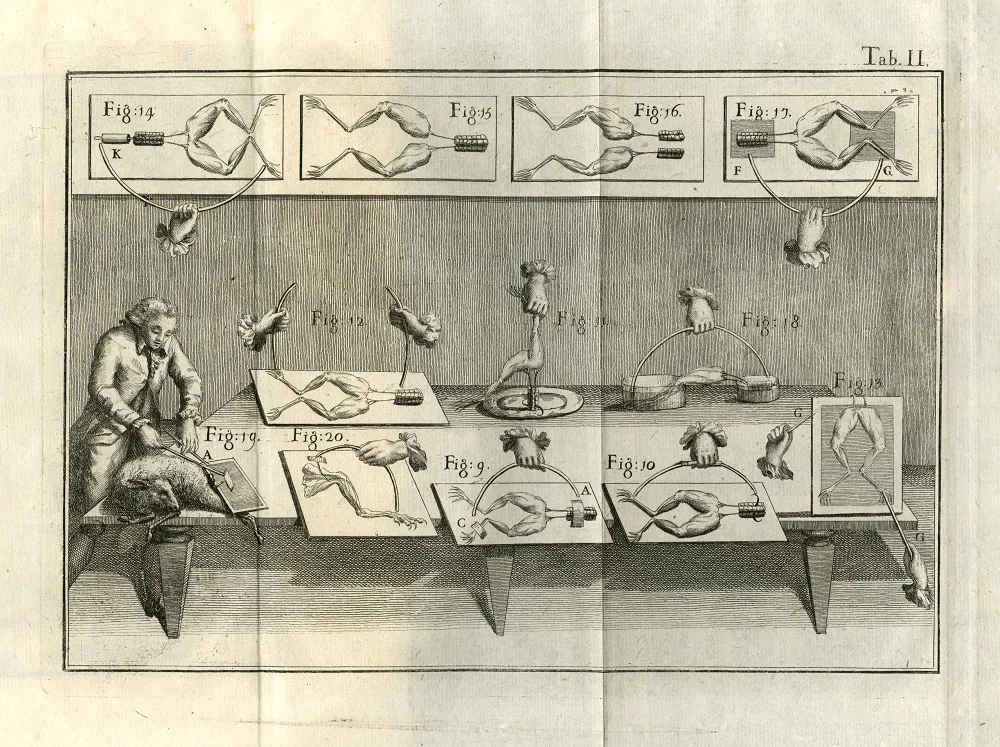Shown here is an illustration of Luigi Galvani's famous frog experiments taken from his work, De Viribus - Electricitatis in Motu Musculari, 1792.

A chance observation led Luigi Galvani (1737-98) to discover animal electricity in 1771. When the nerve of a frog that Galvani's wife was preparing for soup was accidentally touched with a knife a muscle contraction occurred despite the frog not being connected to an electrical machine. Galvani investigated the cause and discovered contractions were excited when two different metals touched.
Previously, Isaac Newton had theorised a link between the 'animal spirits' described in antiquity and the subtle electrical fluids hypothesised by physicists. Caldini had observed that merely bringing an electrified rod within close proximity of a frog would stimulate its muscles. However, it was Galvani who determined that electricity was present in the animal itself.
From his frog experiments, he deduced that contractions were caused by the flow of electricity and when one occurred a nervo-electric fluid was conducted from the nerves to the muscle. This gave a physiological basis for medical electrical treatment.
We’re upgrading our systems, and this includes changes to our customer and member account log in, MyIET. It’s part of our big picture plan to deliver a great experience for you and our wider engineering community.
Whilst most of our websites remain available for browsing, it will not be possible to log in to purchase products or access services from Thursday, 17 April to Wednesday, 30 April 2025. Our Member Relations team is here to help and for many of our services, including processing payments or orders, we’ll be able to support you over the phone on +44 (0)1438 765678 or email via membership@theiet.org.
We apologise for any inconvenience this may cause and thank you for your understanding.
For further information related to specific products and services, please visit our FAQs webpage.
